GADAR: THE CALL TO REVOLUTION
INDIAN FREEDOM FIGHTERS IN THE UNITED STATES

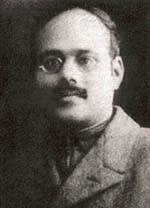
Lala Har Dayal's activities led to his arrest by the U.S. government responding to pressure from the British. (Source: Tribune India)
The Gadar expedition, though doomed, showed the remarkable organizing power and international network of support mobilized by the party and its secretary, Lala Har Dayal. With Har Dayal’s arrival in 1911 to lecture on Indian philosophy at Stanford University, the Indian nationalist movement in the United States had found its galvanizing force. He tapped into the disillusionment and discontent of the immigrant laborers along the Pacific coast, harnessing it to the revolutionary zeal of the students he had further politicized.
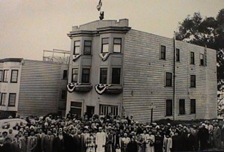
Yugantara Ashram, San Francisco
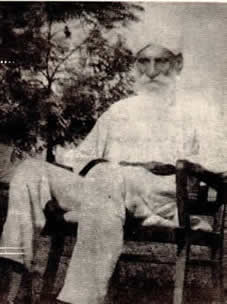
S. Sohan Singh Bhakna, President of the Gadar Party, was one of the organizers of the ill-fated expedition to incite armed resistance in India. (Source: Sikh Pioneers by T.S. Sibia)
He used these energies to found the Pacific Coast Hindustani Association where Gadar Party activities were centralized, and established a print shop he christened “Yugantar (Advent of a New Age) Ashram.” Here, students led by Kartar Singh Sarabha ran the publishing of the Gadar newsweekly which was printed in Urdu, Punjabi, Hindi, English, Bengali, Marathi and Gujarati. Despite British pressure on the U.S. government to shut it down, the paper was distributed throughout North America, Thailand, Japan, Argentina, India, the Philippines, Eastern and Southern Africa, Turkey, and Afghanistan, politicizing large immigrant groups, and even inciting armed rebellions in Hong Kong and Burma.
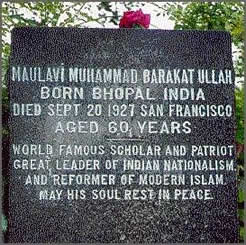
Gadar leader Maulavi Muhammad Barakat Ullah’s grave in the Old City Cemetery, Sacramento, CA (Source: Pioneer Asians: Gadar Photographs)
Liberal press laws in the United States made Manhattan, N.Y. the center for several nationalist publications, but the voice of the San Francisco-based Gadar rang loud and clear around the world. The British, alarmed at the popularity of the Gadar movement, infiltrated the party and began to monitor its activities. They pressured the U.S. government into arresting Dayal in March 1914. Dayal jumped bail and made his way to Germany where he arranged for the German government to support the Gadar Party and send arms shipments to India for an uprising against the British. Later, Dayal became disillusioned with German methods and supported the concept of Home Rule for India.
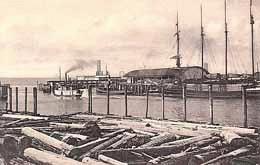
Hoquiam waterfront, (circa 1910) where the schooner Annie Larsen, loaded with arms and bound for India, was seized. (Source: Washington State Department of Archeology and Historic Preservation)
At the outbreak of World War I, Gadar leaders Ram Chandra, Maulavi Barakat Ullah and Sohan Singh Bhakna sailed up and down the Pacific Coast urging expatriates to return to India for spontaneous rebellion. The Gadar newspaper broadcast similar calls to action to its international readership. Inspired, several thousand Gadarites set sail for India during 1915 and 1916 intending to spark armed revolt against the British. They were convinced that the hour of freedom was at hand, that Britain’s preoccupation with the battles in Europe would ensure their victory. But British espionage, betrayal and a lack of local support resulted in a failed movement with many Gadarite deaths in India.
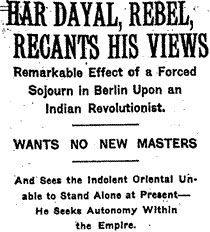
In the United States, sensationalized reporting by newspapers such as the New York Times and the notoriously anti-Asian San Francisco Chronicle had created an atmosphere of paranoia in the country. The Hindu nationalists were linked to anarchists, and their links to Germany were viewed as treasonous. The discovery of incriminating documents and of arms shipments such as those aboard the schooner Annie Larsen led to the Hindu-German conspiracy trials in 1917, the longest and most expensive U.S. trial of the time. Several Gadarites, including Taraknath Das, and their German counterparts were indicted on conspiracy charges and for violating the neutrality laws of the United States and sent to prison.












